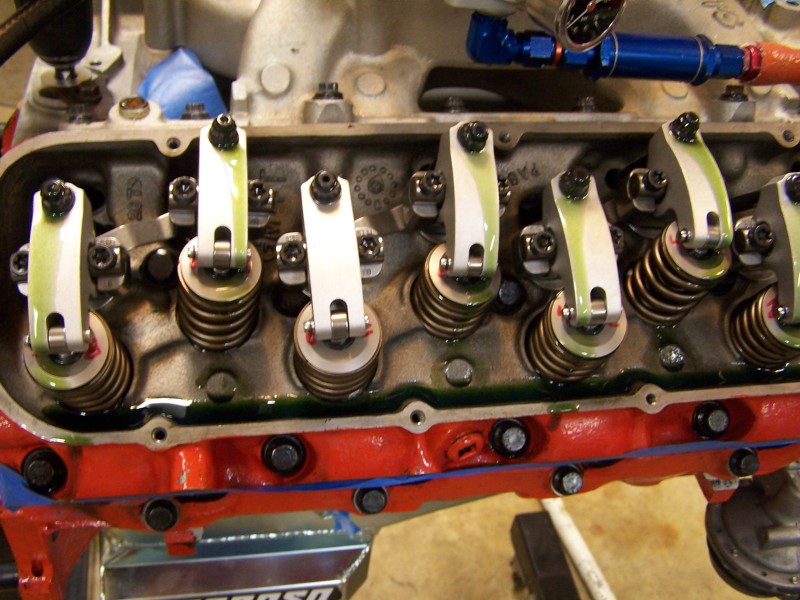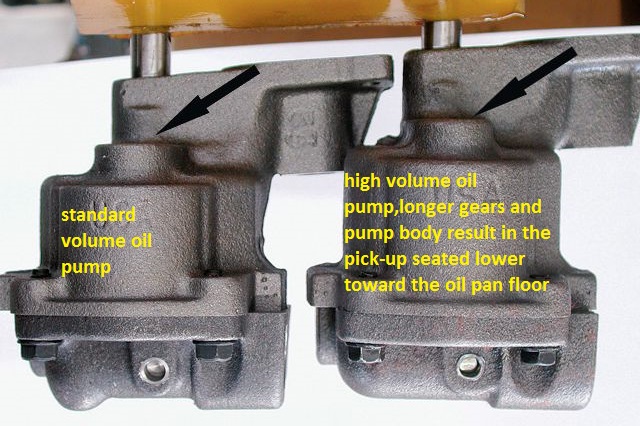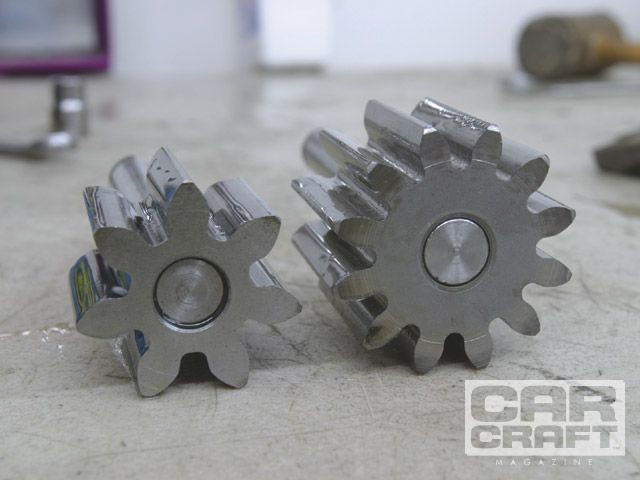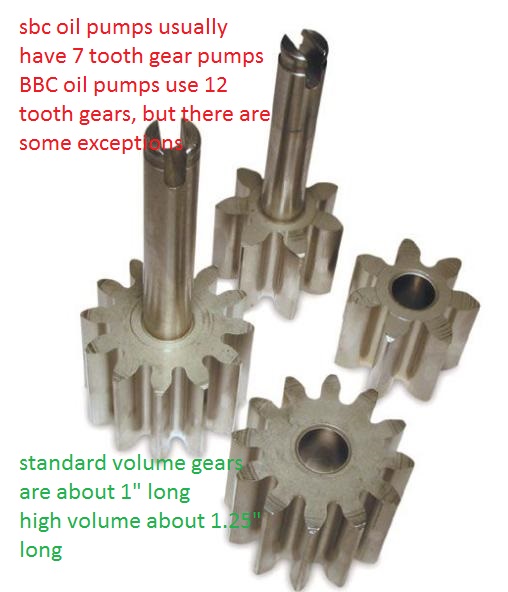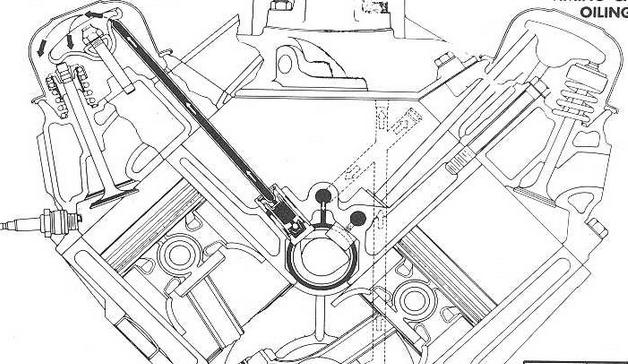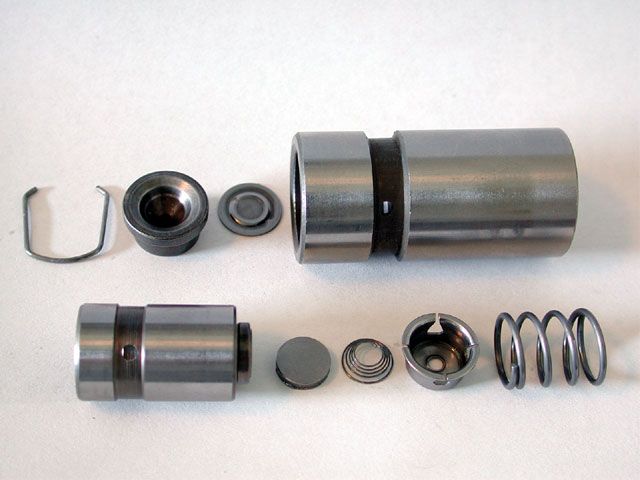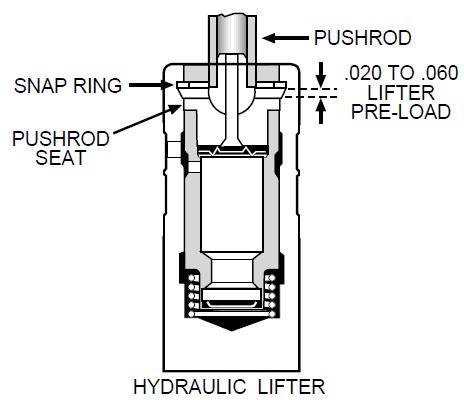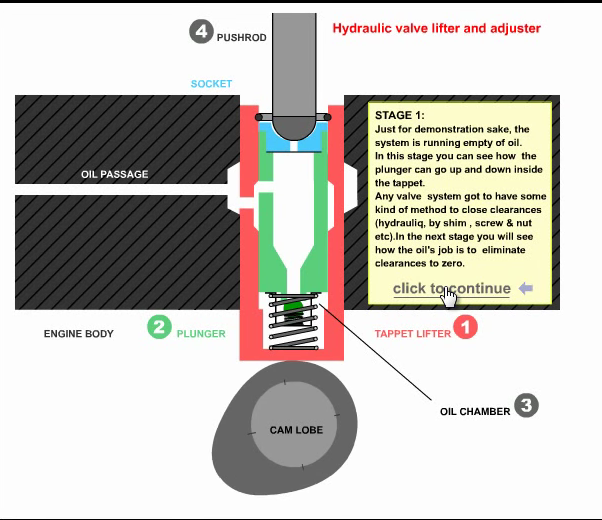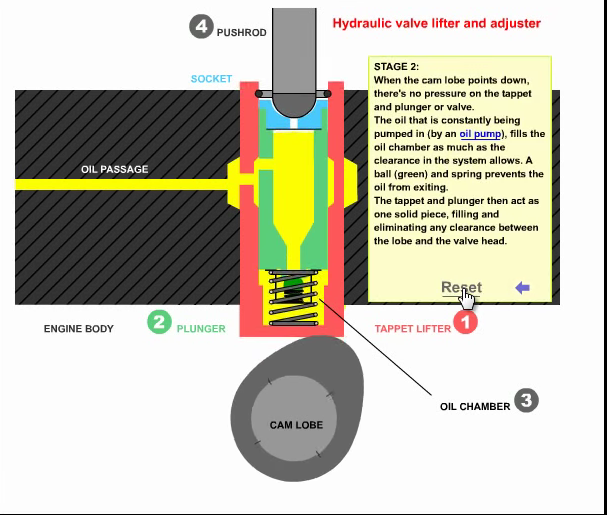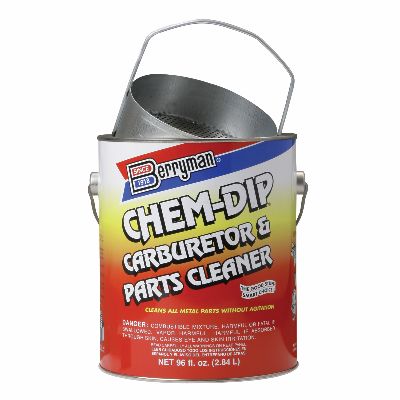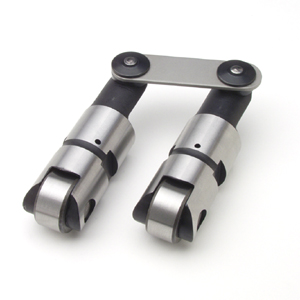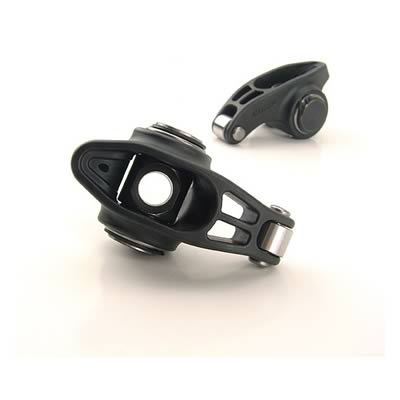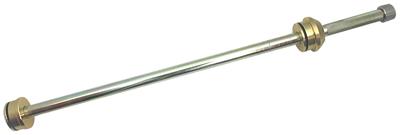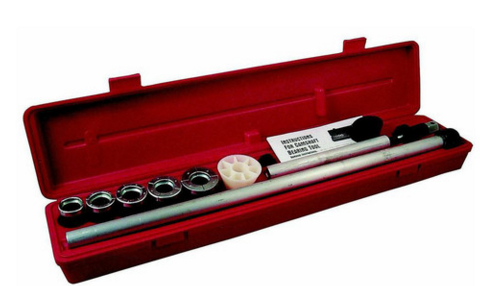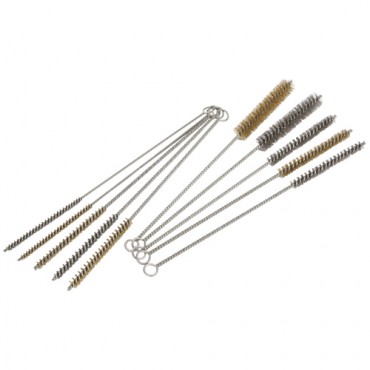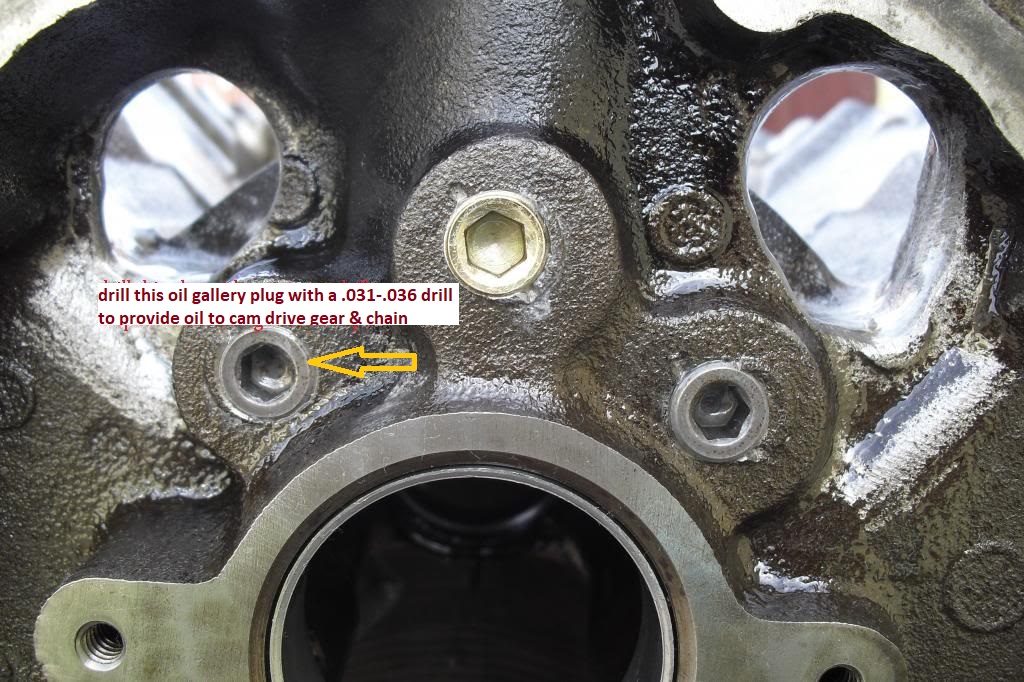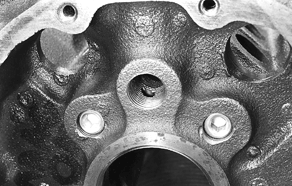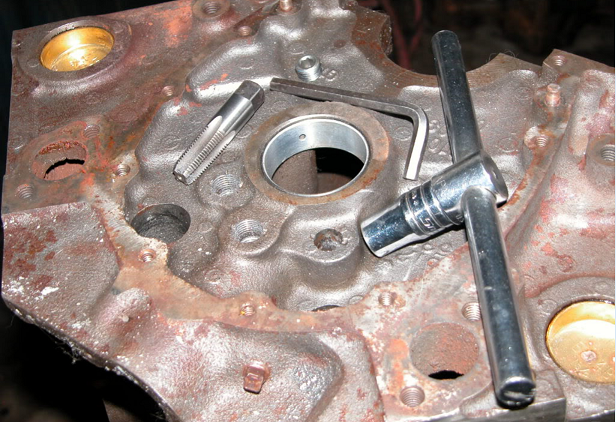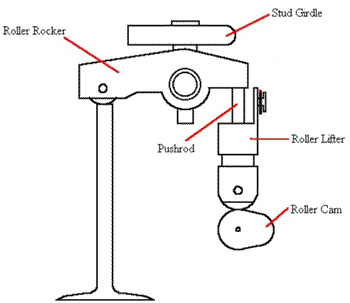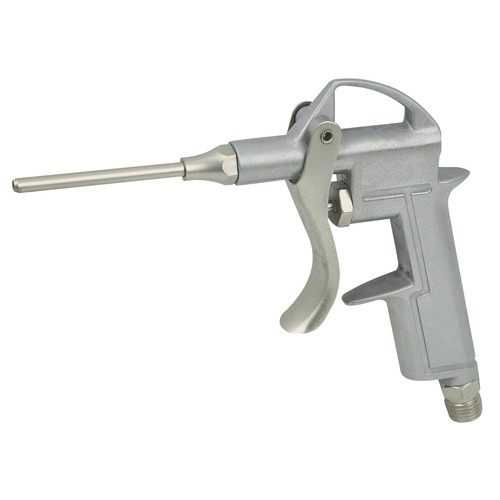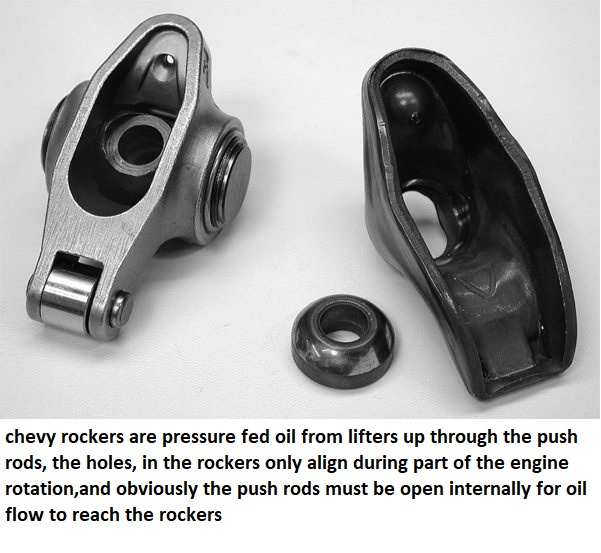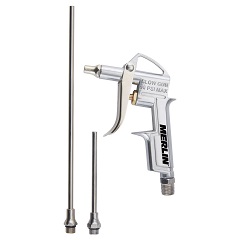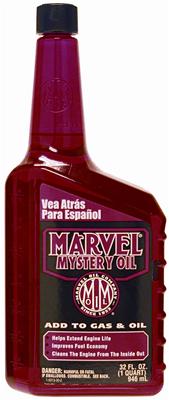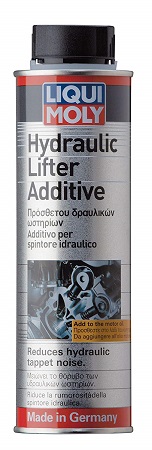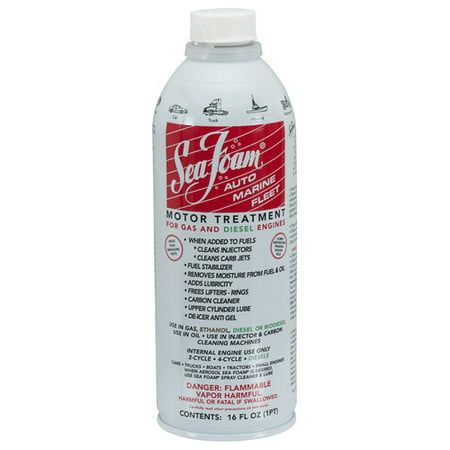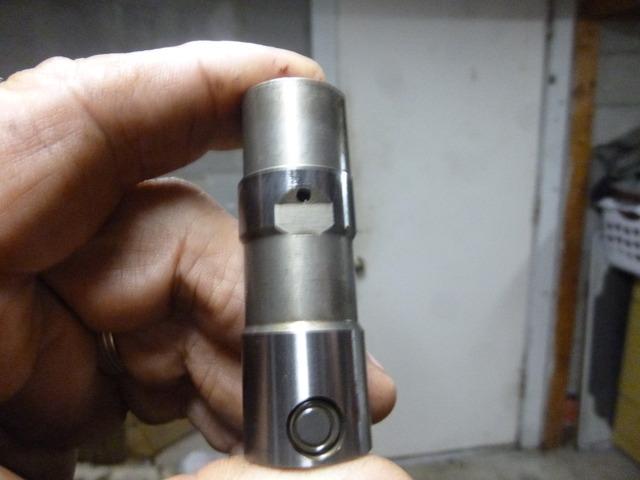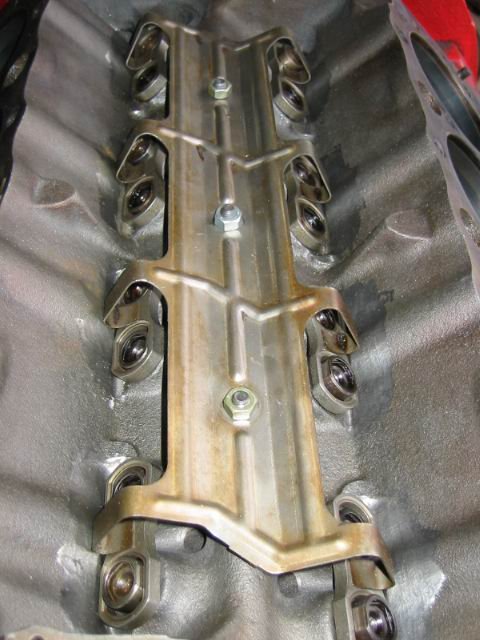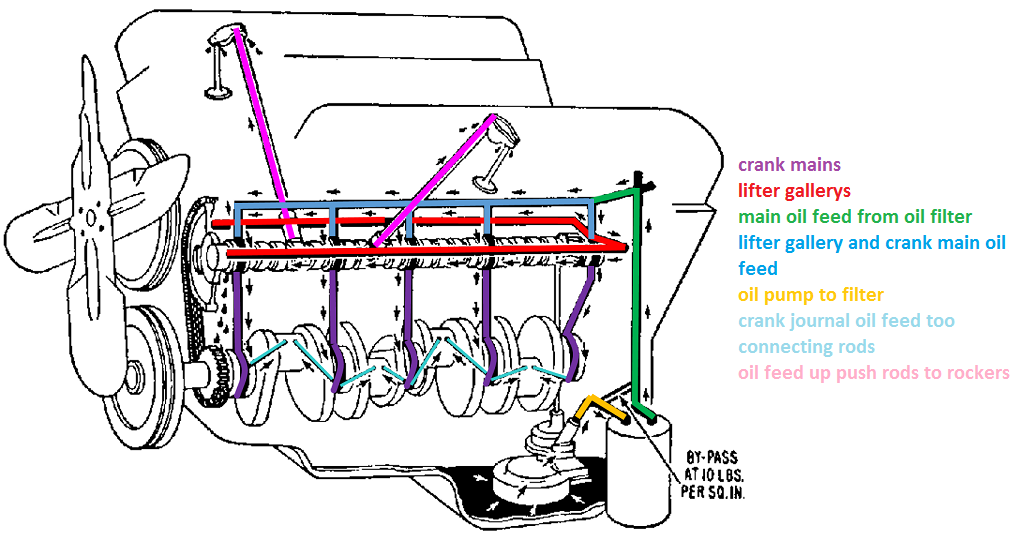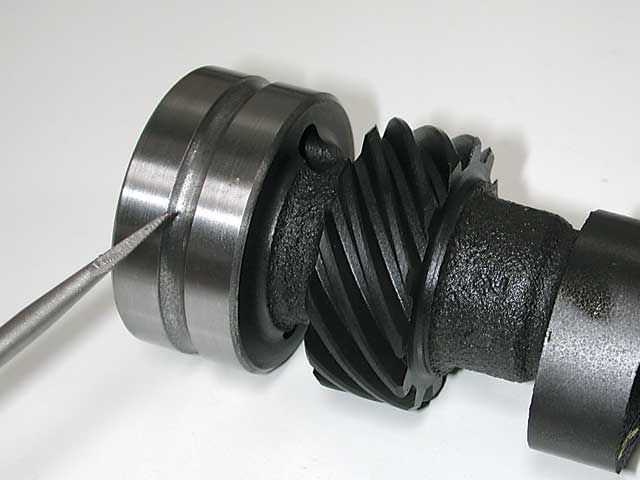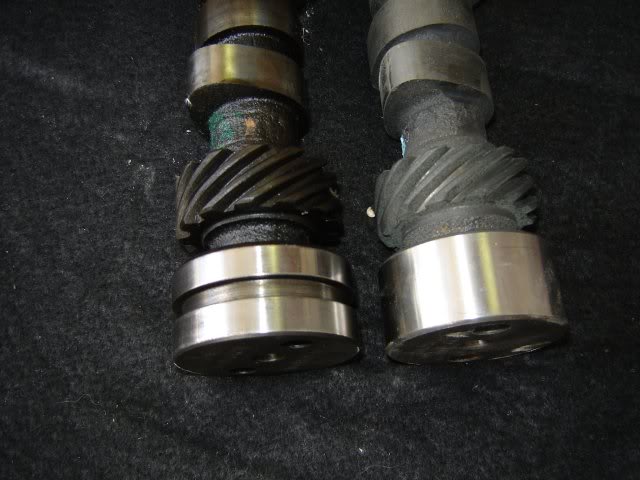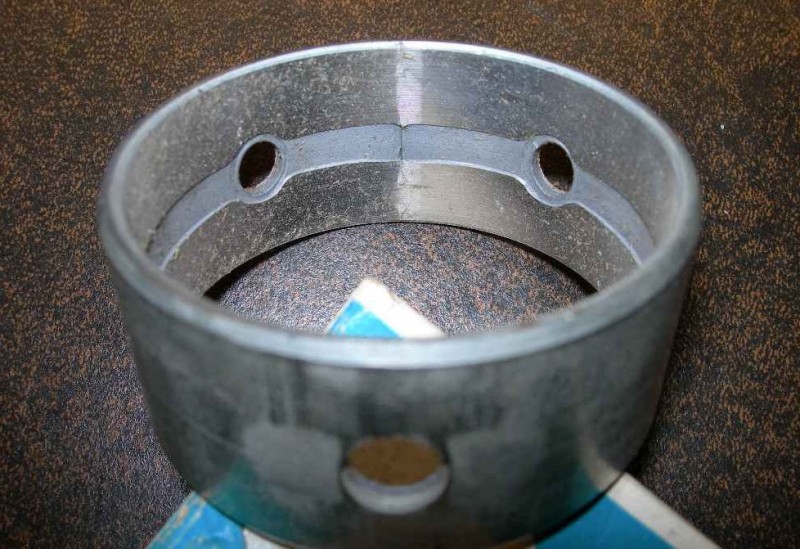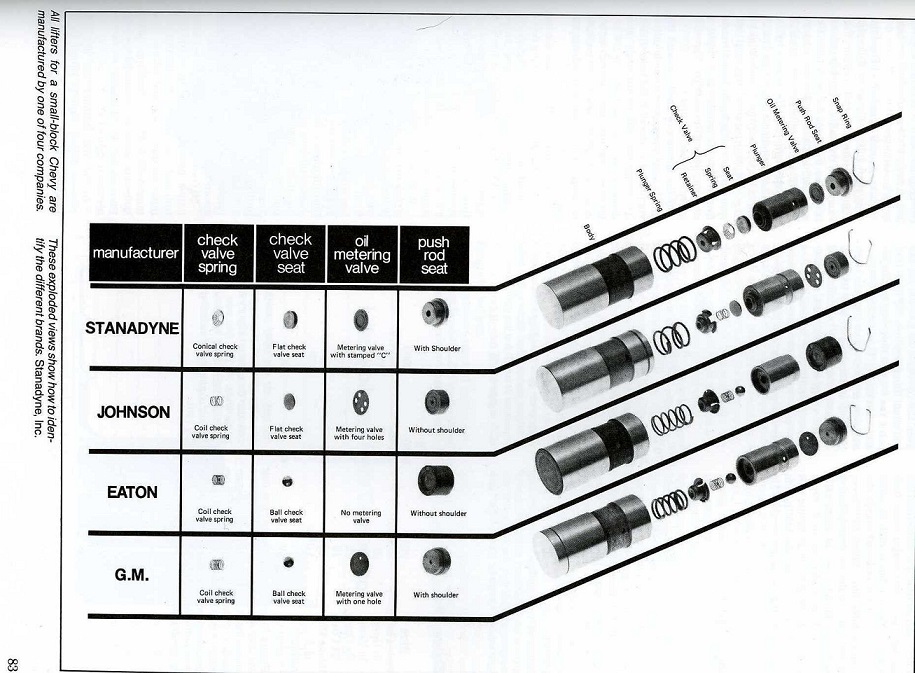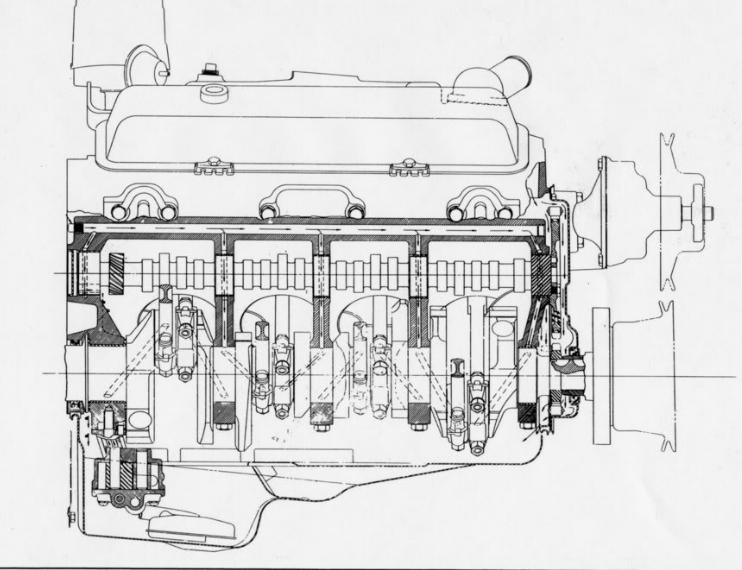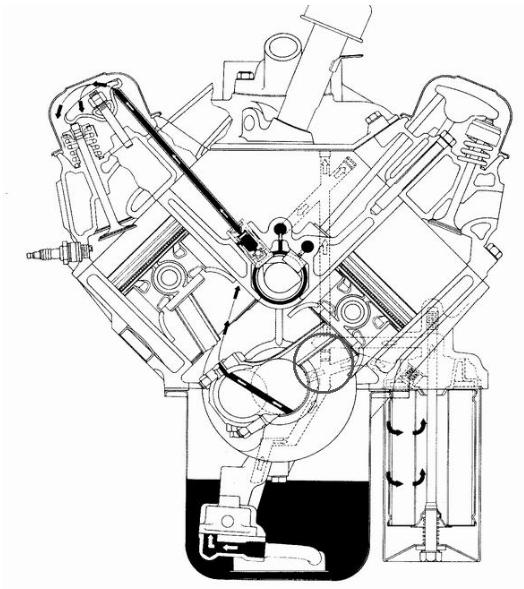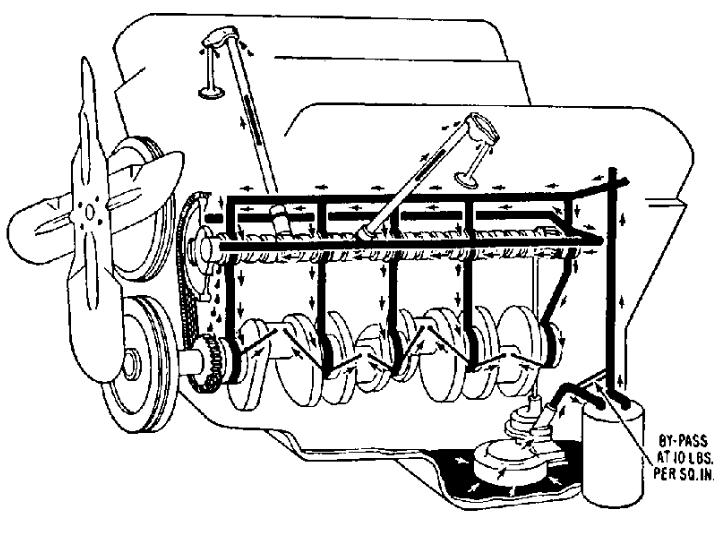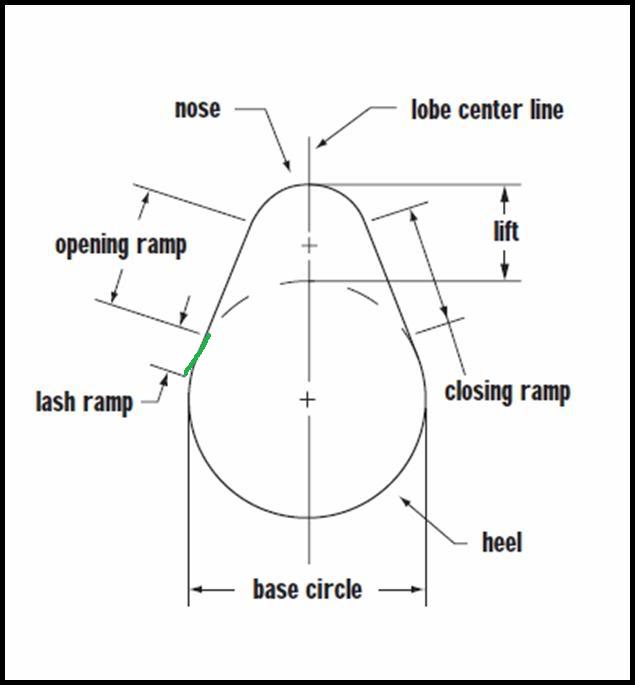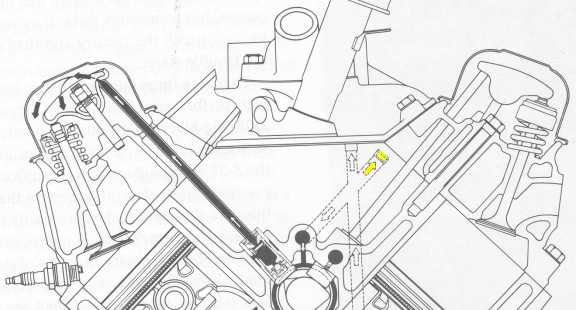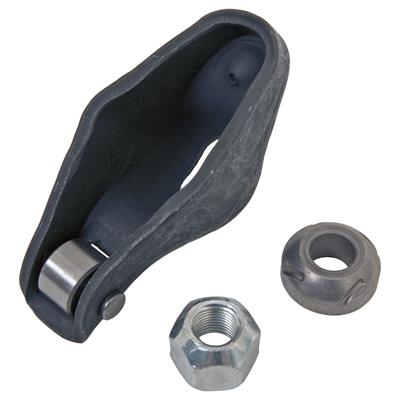" HEY GRUMPYVETTE???
What would cause 70lbs of oil pressure at idle and none to the push rods? Gauge is good. I put in a new hv oil pump and still no oil. HELP!!!!!!!!"
just a tip guys, any ELECTRIC DRILL is going to have a difficult time spinning an oil pump priming tool , without heating up and at least potentially or eventually burning out ,simply because electric drills cool with air flow and spinning as slow as an oil pump priming tool with that much resistance to the rotation its not going to be spinning fast enough to get the required air flow to cool properly.

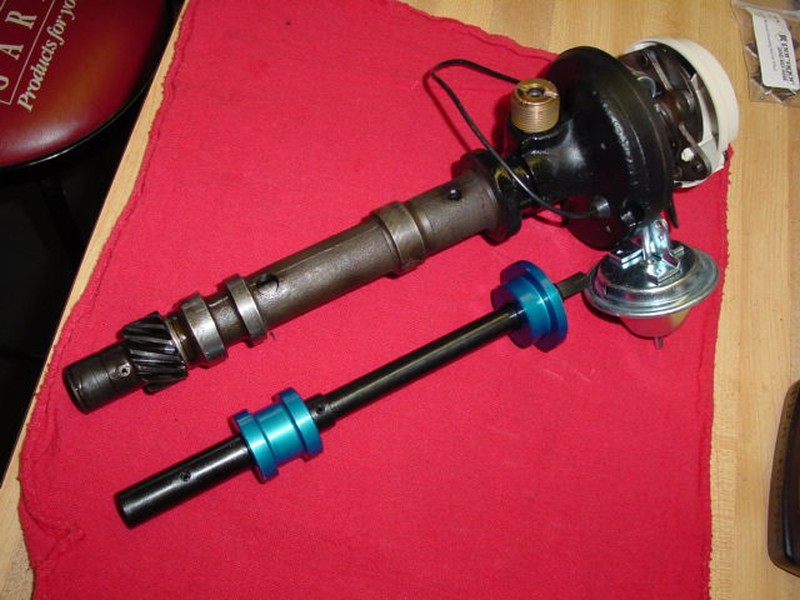
the correct oil pump primer tool duplicates the distributor body and seals the oil passages.
you MUST manually rotate the crank , a MINIMUM of at least two full revolutions while priming the oil passages to insure all the lifters and push rods get full acess to presurized oil flow
there IS a simple solution for anyone who can fabricate that has access to air tools
you simply modify an old distributor similar to this picture then weld on a 3/8" drive socket to the top and your your AIR RATCHET to spin the primer tool which will not overheat and burn up.
btw the best deal I found lately on basic hydraulic flat tappet lifters
http://www.summitracing.com/parts/sum-ht817/overview/
anytime your tracking down a problem you need to isolate and test,each potential source, think logically!
I know some of you would rather be boiled in oil than read links I provide...but you might be amazed at the info they contain
Id suggest two quick checks first, replace your oil filter, as they can be defective and block flow,while its off inspect the spin on oil filter adapter plate
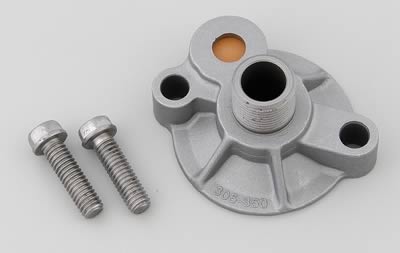
and verify your oil levels at the correct level on the dipstick,
then loosen ALL the rocker arms until they are loose enough to click at idle, and use a pre-luber to furnish the oil pressure without putting any wear on the bearings as you have a friend slowly rotate the crank to allow oil to flow easily
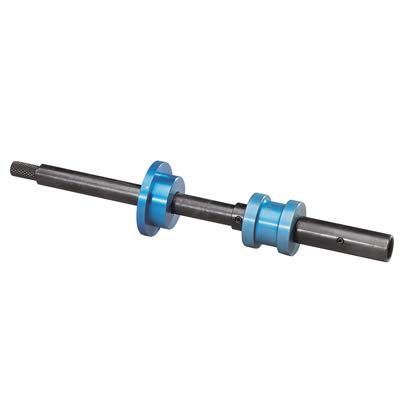
http://www.summitracing.com/parts/SUM-901010/?rtype=10
READ THIS THREAD
viewtopic.php?f=52&t=6491&p=20681&hilit=spray+springs+cooling#p20681
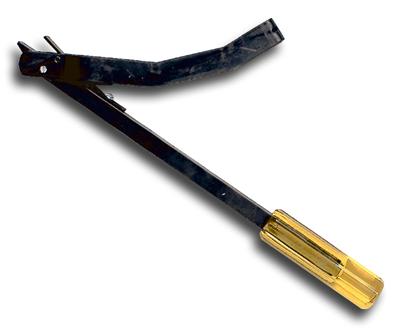
READ THESE threads, a clogged oil passage or cam or main bearing oil feed hole, bearings full of crud from a previous failed cam, lifter,or bearing failure, or bits of silicone gasket material or the wrong oil filter or oil pump pick-up can be a problem source. If you find a single lifter or cylinder clicking, obviously youll want to verify clearances and adjust the rocker, if the ticking continues you might have a worn cam lobe but do some testing and checking, Assuming youve located the lifter tick to a single cylinder location, do this quick test, look carefully for an exhaust gasket leak, if you don,t find one .swap a couple rocker arms that are NOT near each other and see if the problem stays with the lifter or rocker arm location
a good many lifter ticks are rocker related
the oil mist bath, being constantly thrown from the rotating crank assembly unto the lower bore walls,and rockers over the valve train,valve springs, rockers,rods and underside of the pistons does A GREAT DEAL of the initial heat absorption and heat transfer,
and prevents the pistons and rings from being damaged,
only as the hot oil falls, and drains back into the lower sump is much of the heat transferred to the coolant in the block.
oil flow and coolant flow are both required to absorb and remove heat build-up from the engine,especially from the rotating assembly , bearings,and valve train components
http://garage.grumpysperformance.com/index.php?threads/bbc-oil-gallery-plugs-drill-holes.15273/

obviously the small groove is intended to flow extra oil volume to the rear vertical thrust bearing surfaces
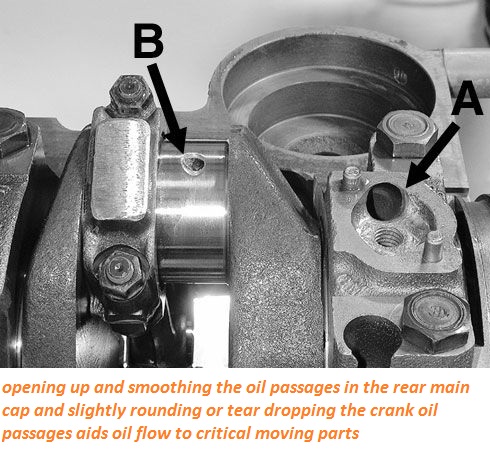
If your not getting oil to the rockers but have 65 psi as the engine idles,
Id suspect either the cam bearings (especially the rear cam bearing or the oil passage plugs under the timing chain are incorrectly installed

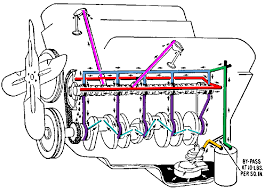


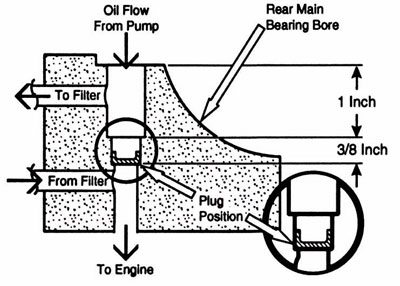
http://www.enginebuildermag.com/Article ... pumps.aspx

ANY TIME YOUR TROUBLE SHOOTING AN OIL PRESSURE ISSUE....
you DO REALIZE THAT THE BASE OF THE DISTRIBUTOR OR PRE_OILER , MUST look like the one above
because it FORMS a wall in the lower lifter gallery oil passage
if you use a pre-oiler or oil pump drive like these below, theres a huge internal leak and youll never get much oil flow
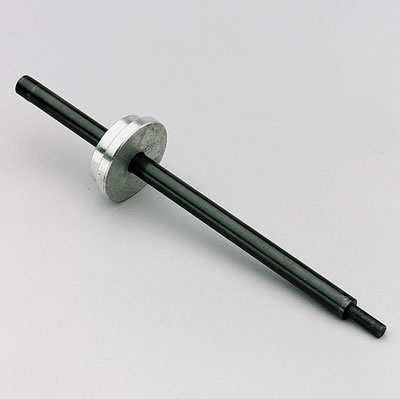
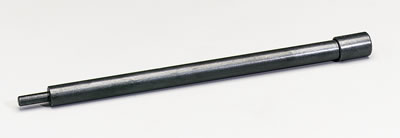
theres also a plug that can be incorrectly installed
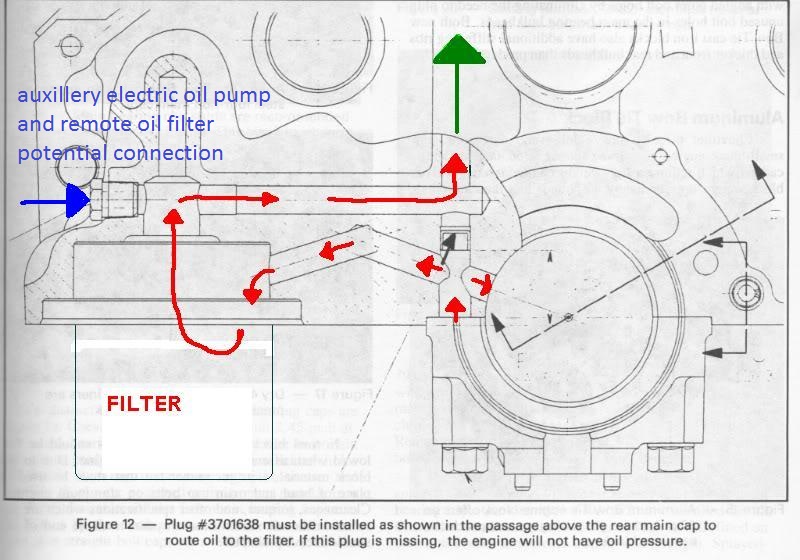
correct
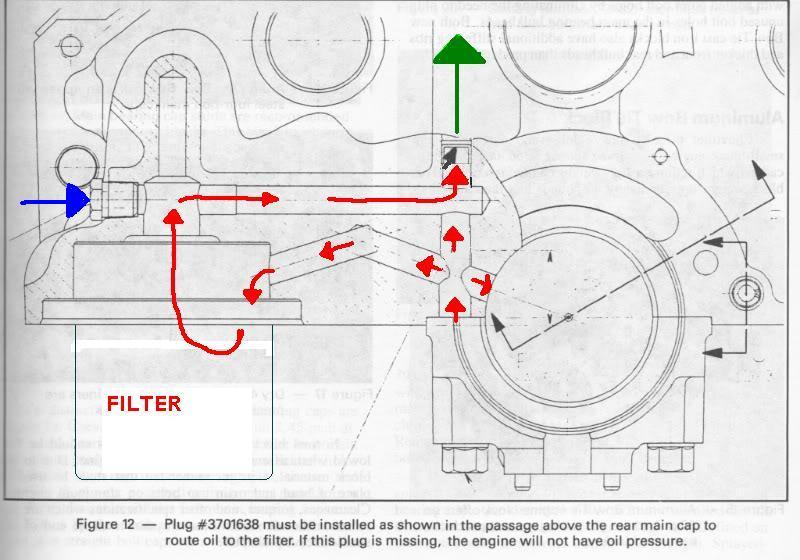
PLUG BLOCKING OIL PASSAGE which may be your issue
the plug is not sideways, or missing, if it was theres no difference in oil pressure, you just have most of the oil bye-pass the filter
if you had both oil pressure and flow for over 1200 miles for the cam break in, its not likely the plug, personally Id inspect the oil pump and pick-up that will require a tool like this one below or pulling the oil pan
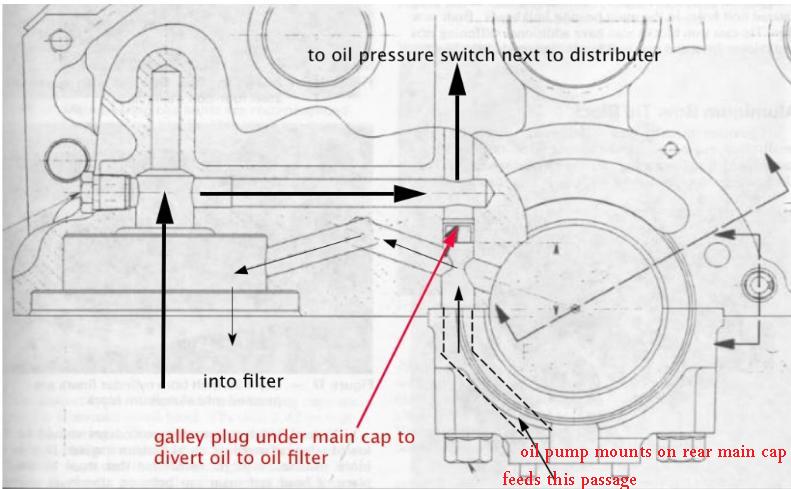
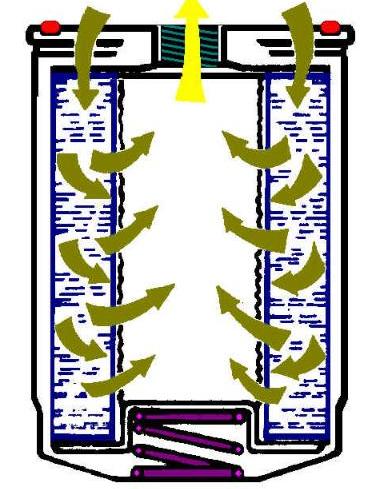

http://www.toolrage.com/prodView.asp?sku=SLI-PV618
the tool I bought saves me a ton of work

assuming the proper bearing clearances and proper oil pump, was selected,ans oil pump pick-up installation were done,
the two most common reasons I see for low oil pressure are related to either the oil pump pick-up mounted too close to the oil pan floor
(3/8' clearance is about ideal) or trash/debris getting into the oil pressure bye-pass valve spring area
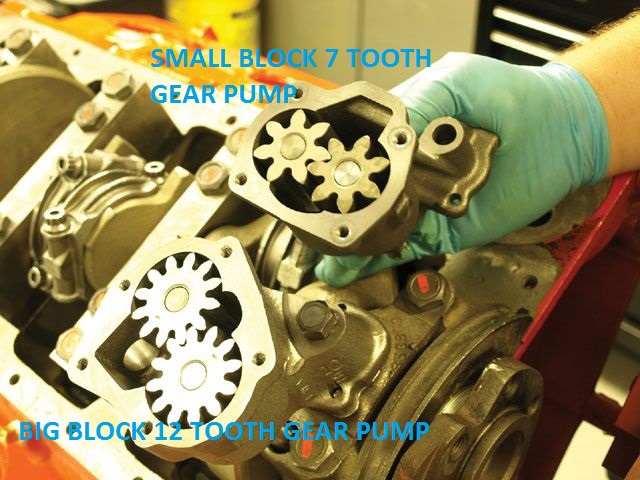
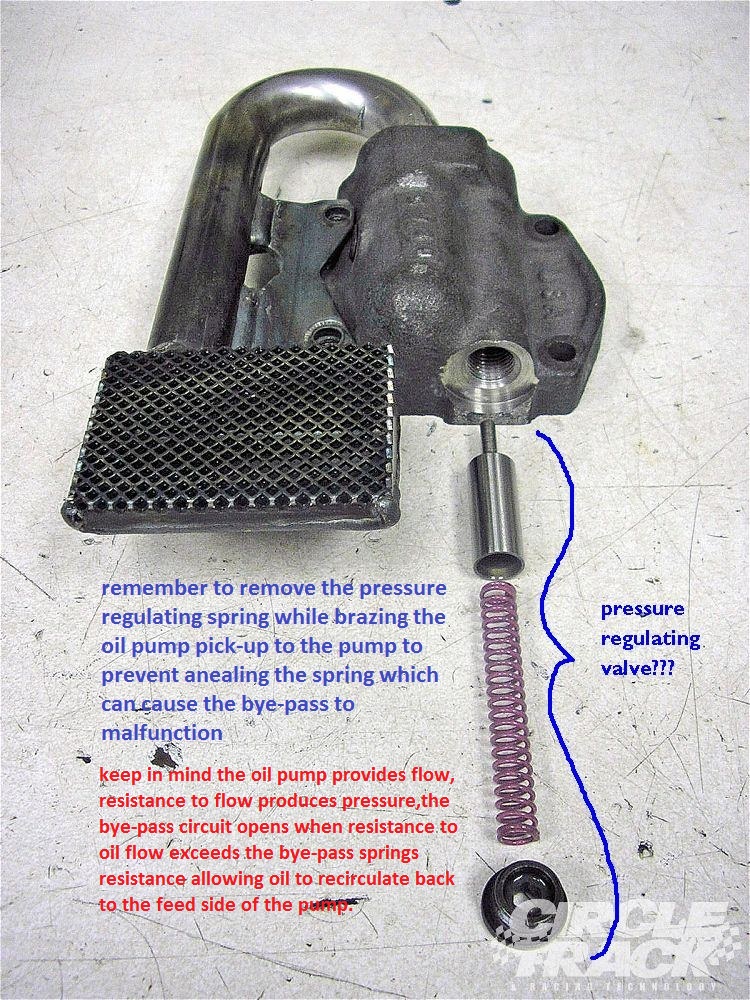
when you inspect the bye-pass piston and spring or replace the oil pumps bye-pass spring, in the oil pump you must be certain it smoothly slides through the internal passage , if it binds it will cause issues with erratic oil pressure
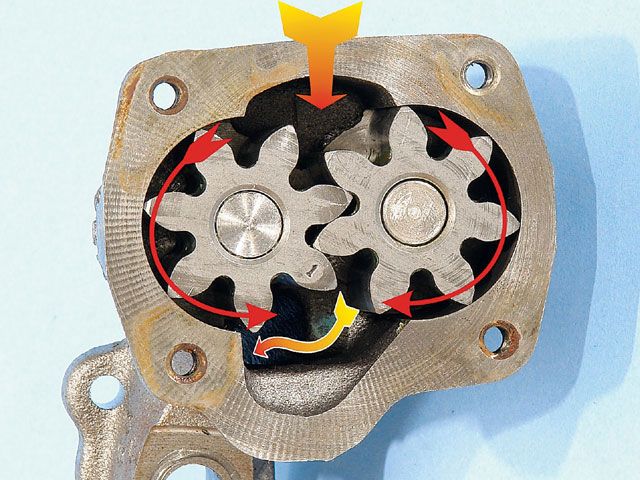
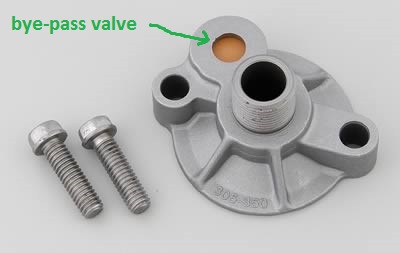
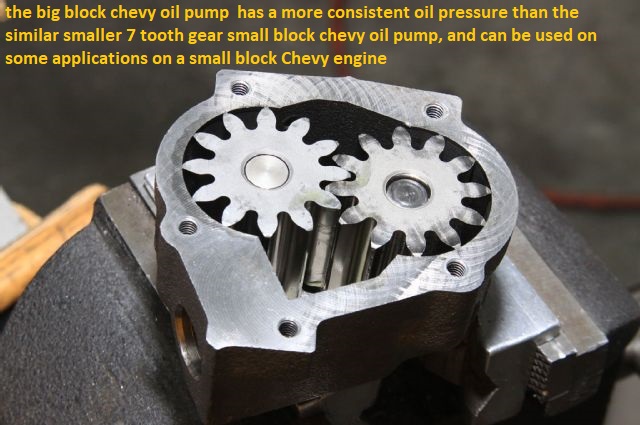
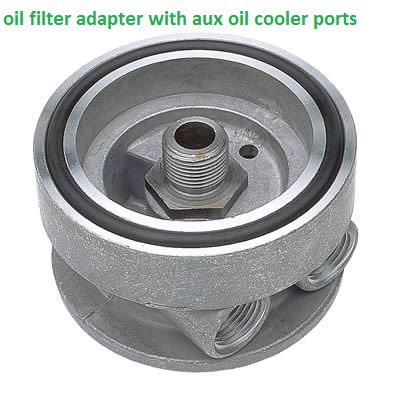
your typical small block oil pump has a 4 bolt cover, a 5/8" pick-up tube diameter and the pick-up presses into the cover , it has the smaller 7 tooth gears, and because the pick-up tube presses into the cover swapping from a standard to a high volume pump, with its longer impeller and hoseing casting, tends to move the pick-up about 1/4" closer to the oil pan floor
keep in mind that as oil temps increase the oil viscosity tends to decrease, thus cold oil, at lets say 70F might cause the oil pressure gauge to read 50 psi at idle but the pressure reading slowly goes down to 25 psi once the oils reached lets say 210F, this is normal and expected
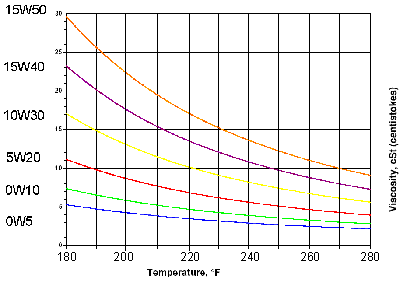
REMEMBER the oil pump bye-pass is designed to limit oil pressure reaching the oil passages in the block,to usually 65psi-75psi max, by opening and re-routing oil from the pressure side of the oil pump to the suction side of the gears one its forced open, this is not the same and has nothing to do with the oil filters oil bye-pass valve,
yes the BYE-PASS IN THE OIL FILTER DOES normally open on cold mornings, or under rapid changes in engine rpms, especially before the heat from the engine lowers the oils effective viscosity, Im fairly sure you have heard or remember hearing advise not to go doing stupid stuff like burn outs in your drive way until the engines reached and maintains operational temps
(usually oil and coolant has reached 190F-215F) well one big reason is that thicker oil viscosity when oils cooler ,takes a good deal more pressure to force thru the filter medium, once the oils fairly hot it flows better, and requires less pressure as it offers less resistance to flow thru the engines clearances and thru the filter, that in turn means that hot oil with its thinner effective viscosity tends to be far less likely to force open the filter bye-pass circuit and that means oil bye-passing the filter medium is far less likely to drag metallic trash held in suspension with it to reach the bearings to cause more rapid wear.the oil filter bye-pass is designed to bye-pass oil to the engine rather than forcing it thru the oil filter any time the pressure on the inlet side of the oil filter is higher than about 10 psi over oil pressure passing thru the oil filter, this in theory prevents the semi clogged oil filter from starving the bearing of oil.but it also means that during rapid rpm changes or before the oils up to operational temps some oil is routed around and past the filter, under the concept that dirty pressurized oil is far superior to no oil reaching the bearings.
MORE USEFUL INFO
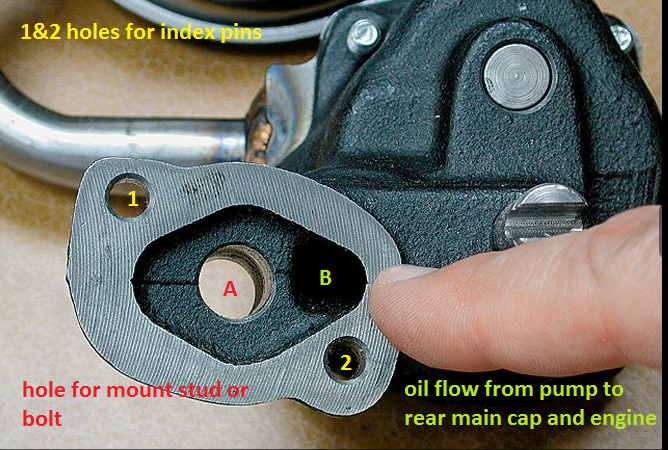
think logically!
(1) if hes got 70 psi at idle theres only a few potential problems
(2)he can,t have a major oil passage plug out of place other than the one I linked too being placed too deeply, so it blocks most or all of the oil to the lifter gallery passages.
(3) he states the GAUGE is correct(I tend to doubt that a bit because even a high volume oil pump will rarely reach 70psi at idle) but because oil is not compressible yes its entirely possible
while your engines running theres several gallons of oil per minutes circulating thru your blocks oil pump and the blocks internal oil passages, if you have any crud suspended in that oil like particles of sealant or micro bits of bearing or cam lobe, metallic crud from a wiped cam lobe etc, its pumped, thru the oil system along with the oil flow until its trapped by the oil filter, or gets trapped and blocks the oil passages.
all that extra silicone sealant that gets squeezed out off the gaskets tends to get carried by the oil flow into the oil pan where some of its trapped in the oil filter during each successive trip thru the engine, but bits that get trapped in the oil passages can rapidly reduce oil flow and destroy bearings, cam lobes and rockers and lifters.

IN THE PICTURE ABOVE, YOU SEE THE RESULTS OF EXCESS GASKET MATERIAL AND SILICONE SEALANT THAT GOT LOOSE IN THE OIL,AND PASSED INTO THE OIL PASSAGES AND BLOCKED THE BEARING OIL FEED HOLES
there are many oil leakage points(100) in a standard Chevy engine.
16 lifter to push rod points
16 push rod to rocker arm points
32 lifter bores 16 x 2 ends
10 main bearing edges
9 cam bearing edges
16 rod bearing edges
2 distributor shaft leaks
1 distributor shaft to shim above the cam gear(some engines that have an oil pressure feed distributor shaft bearing.)
[/b]
http://garage.grumpysperformance.com/index.php?threads/bbc-oil-gallery-plugs-drill-holes.15273/
yes Ive seen several cases where guys failed to install the oil pump pick-up at the proper minimum 3/8"-to-1/2" off the oil pan floor clearance,
the result is the pump is starved for oil intake flow.

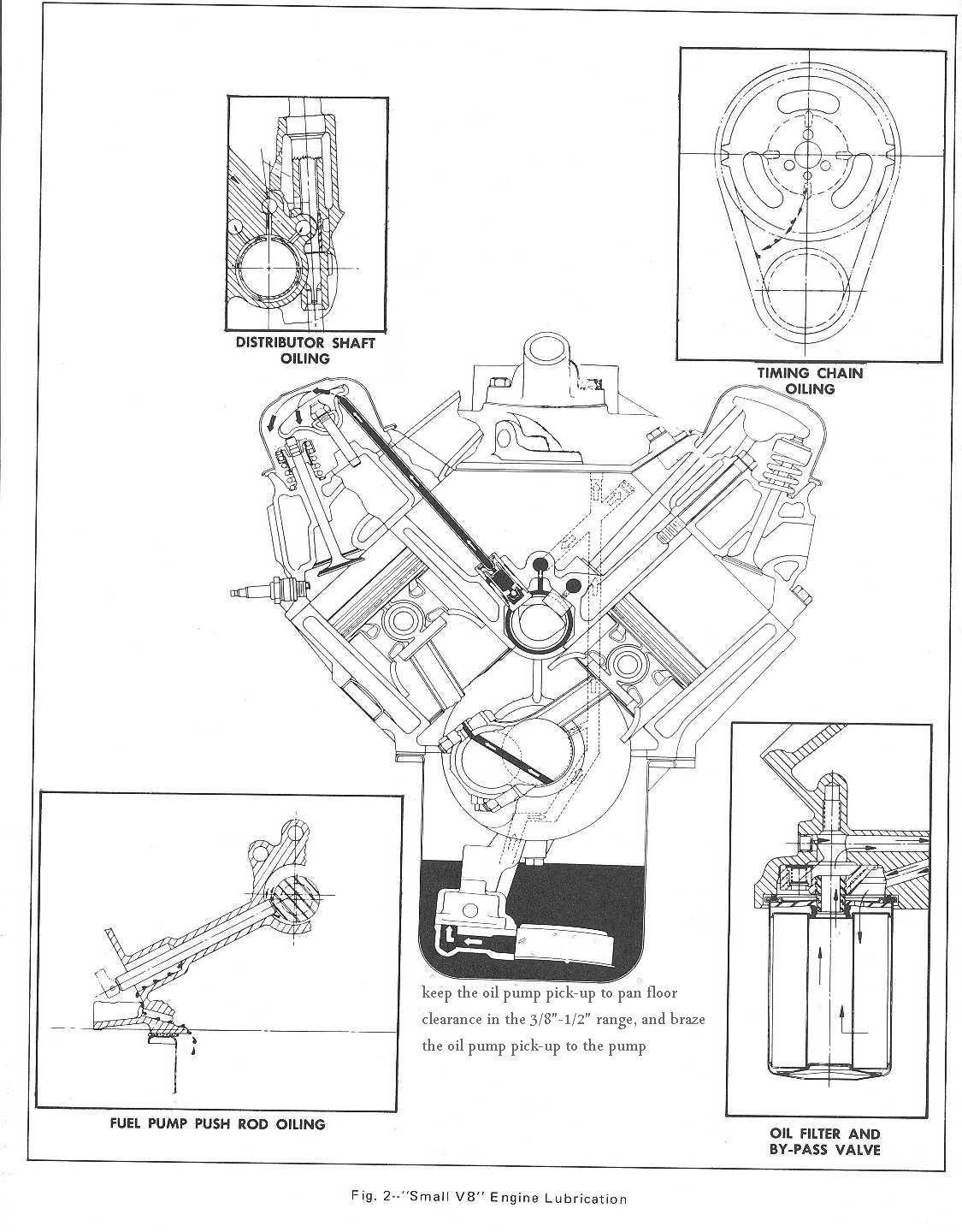
http://garage.grumpysperformance.co...m-sure-your-convinced-its-the-oil-pump.11085/
http://garage.grumpysperformance.co...m-oil-pump-installed-now-no-oil-pressure.525/
http://garage.grumpysperformance.com/index.php?threads/bbc-oil-pump-in-a-sbc.2598/
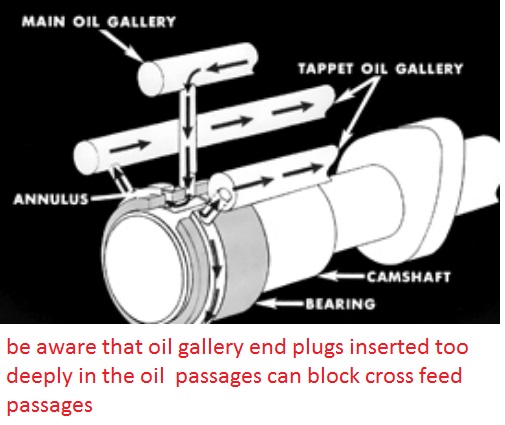
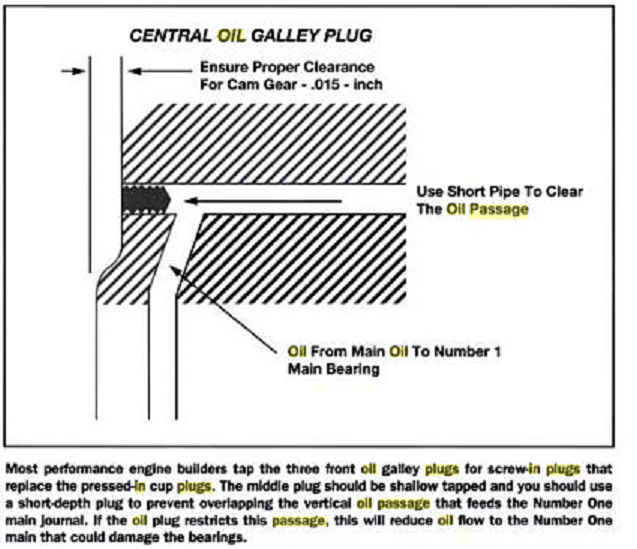
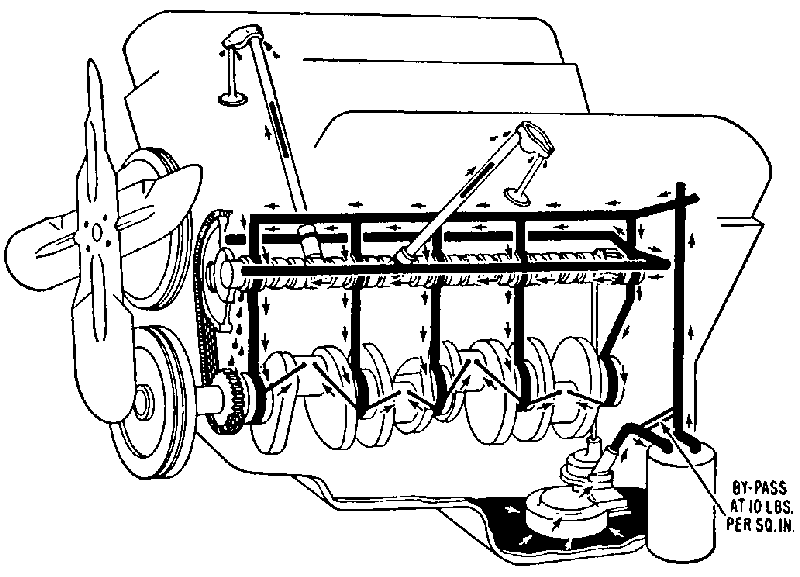
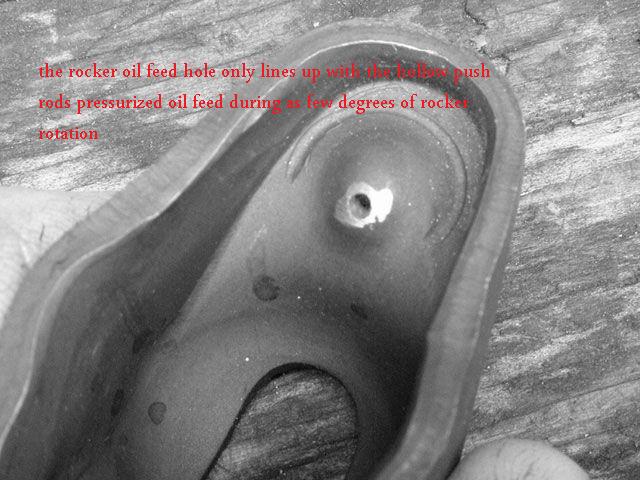
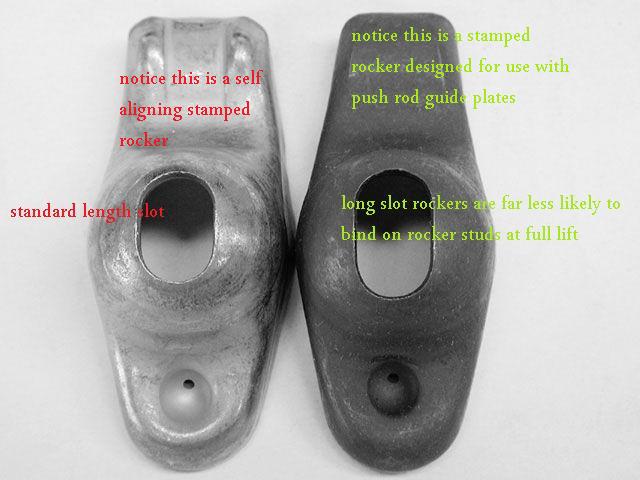
check all valve train geometry and clearance on any engine you assemble or modify the valve train on.
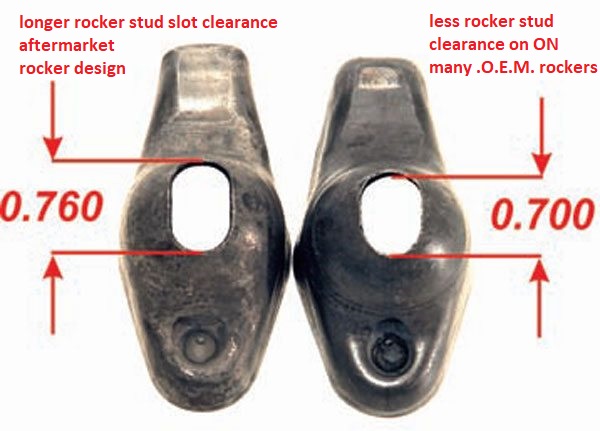
the first thing Id be doing here, if your not getting a strong oil flow at each rocker while your turn the engine manually and use the oil priming tool, is carefully visual checking of BOTH the valve train rocker geometry and that the push rods are completely hollow and free of debris, by cleaning each with solvent and high pressure air, then mocking the drive train up and verifying that BOTH the rocker and push rod oil feed holes line up at some point in the 720 degrees of rotation, and that the bottom end of the push rods stay aligned with the center of the lifters, seat, this might sound like its a assumed fact, but its easily possible for the push rods to bind on the push rod guide plates or guide slots in the cylinder heads, this potential BINDING will move the push rod , out of its seat on the lifter or rocker preventing proper oil feed out of the lifter or rockers proper alignment, if the oil feed holes are not properly lined up oil won,t flow freely
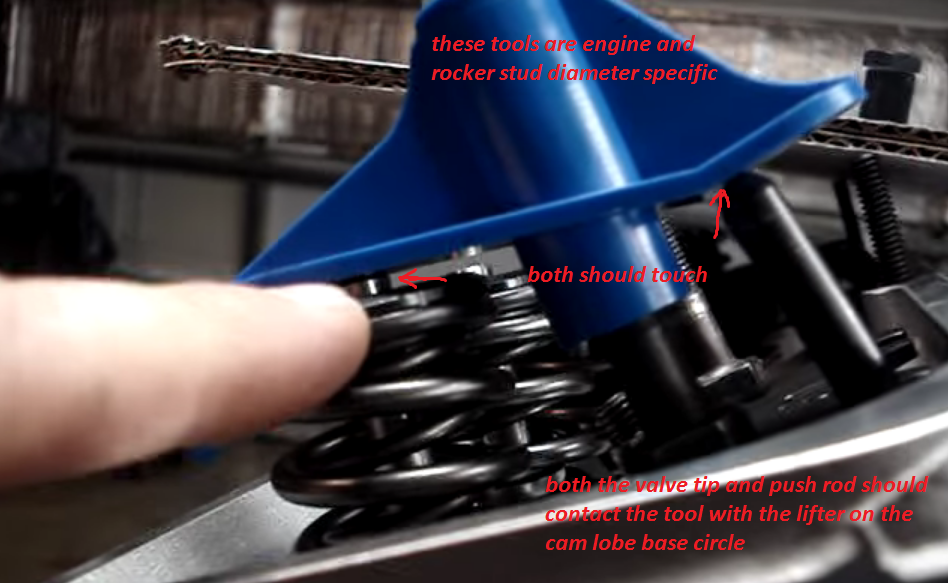
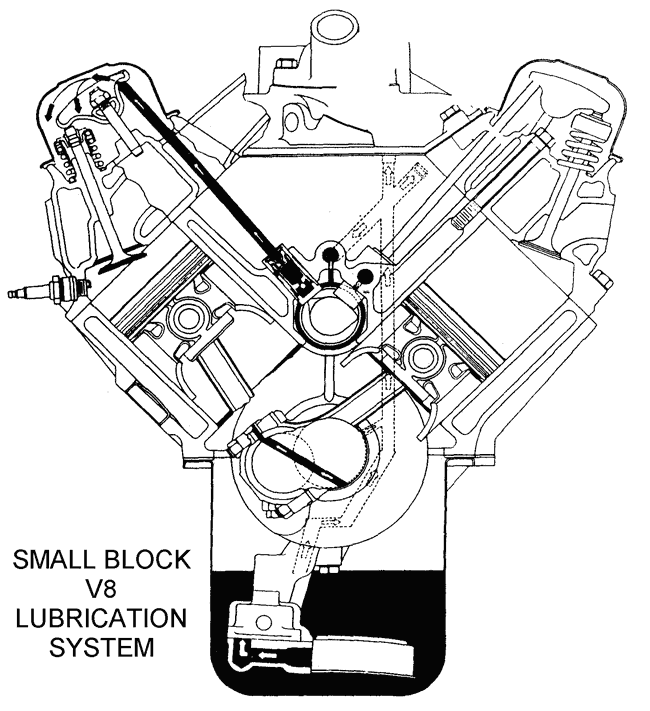
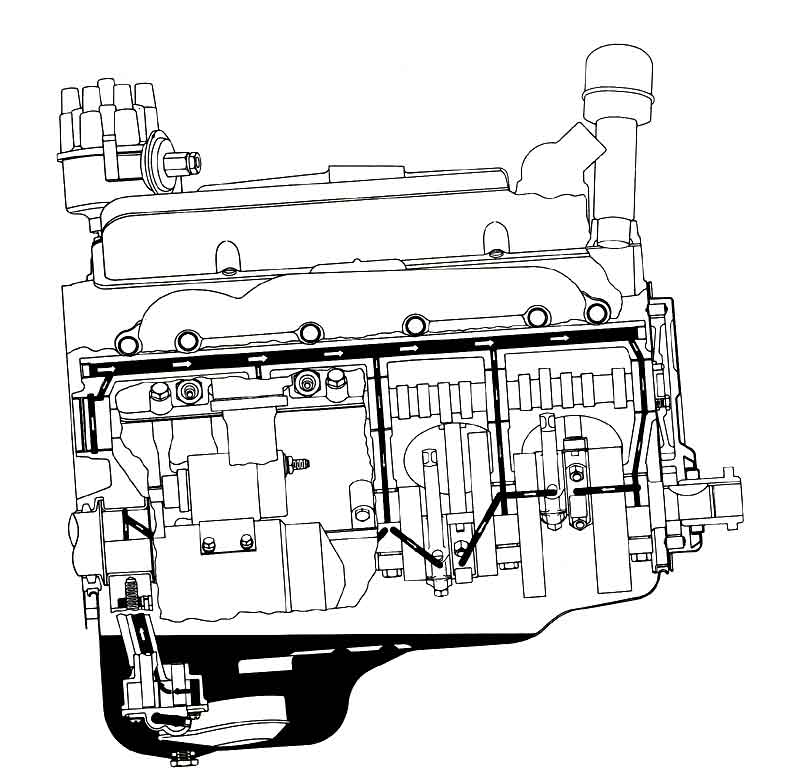
if crud blocks most of these leakage points pressure will rapidly increase until the pumps bye-pass circuit opens to limit pressure to 65-70 psi
viewtopic.php?f=54&t=52
viewtopic.php?f=54&t=150
viewtopic.php?f=54&t=3536
viewtopic.php?f=52&t=6491
did you do what I suggested and loosen every rocker until it clicks, the reason is that its entirely possible to cold adjust rockers so the lifter seat can,t move far enough up to fill the lifter with oil,when its on the base of the cam lobe when the rockers not placing spring loads on the lifter seat so that no or darn little oil gets under the push rod seat consequentially, no-or very little oil moves up the push rods
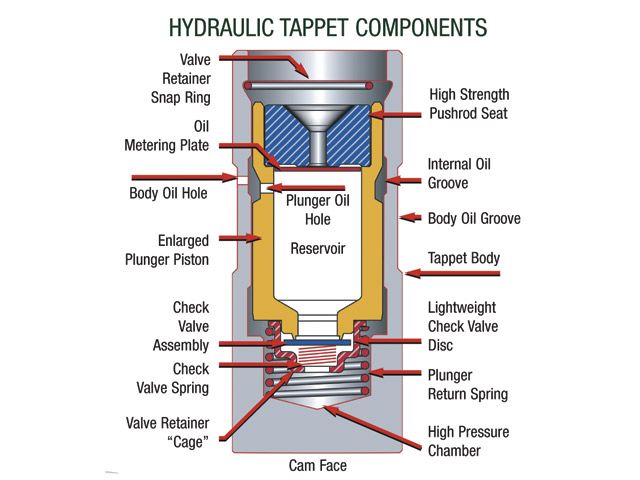 because any missing plug would severely reduce the oil pressure.
because any missing plug would severely reduce the oil pressure.

if your not getting oil to the lifters this process of loosening all the lifters to maximize the lifter push rod seat movement is a mandatory first step in locating the source of the problem.
What would cause 70lbs of oil pressure at idle and none to the push rods? Gauge is good. I put in a new hv oil pump and still no oil. HELP!!!!!!!!"
just a tip guys, any ELECTRIC DRILL is going to have a difficult time spinning an oil pump priming tool , without heating up and at least potentially or eventually burning out ,simply because electric drills cool with air flow and spinning as slow as an oil pump priming tool with that much resistance to the rotation its not going to be spinning fast enough to get the required air flow to cool properly.

the correct oil pump primer tool duplicates the distributor body and seals the oil passages.
you MUST manually rotate the crank , a MINIMUM of at least two full revolutions while priming the oil passages to insure all the lifters and push rods get full acess to presurized oil flow
there IS a simple solution for anyone who can fabricate that has access to air tools
you simply modify an old distributor similar to this picture then weld on a 3/8" drive socket to the top and your your AIR RATCHET to spin the primer tool which will not overheat and burn up.
btw the best deal I found lately on basic hydraulic flat tappet lifters
http://www.summitracing.com/parts/sum-ht817/overview/
anytime your tracking down a problem you need to isolate and test,each potential source, think logically!
I know some of you would rather be boiled in oil than read links I provide...but you might be amazed at the info they contain
Id suggest two quick checks first, replace your oil filter, as they can be defective and block flow,while its off inspect the spin on oil filter adapter plate

and verify your oil levels at the correct level on the dipstick,
then loosen ALL the rocker arms until they are loose enough to click at idle, and use a pre-luber to furnish the oil pressure without putting any wear on the bearings as you have a friend slowly rotate the crank to allow oil to flow easily

http://www.summitracing.com/parts/SUM-901010/?rtype=10
READ THIS THREAD
viewtopic.php?f=52&t=6491&p=20681&hilit=spray+springs+cooling#p20681

READ THESE threads, a clogged oil passage or cam or main bearing oil feed hole, bearings full of crud from a previous failed cam, lifter,or bearing failure, or bits of silicone gasket material or the wrong oil filter or oil pump pick-up can be a problem source. If you find a single lifter or cylinder clicking, obviously youll want to verify clearances and adjust the rocker, if the ticking continues you might have a worn cam lobe but do some testing and checking, Assuming youve located the lifter tick to a single cylinder location, do this quick test, look carefully for an exhaust gasket leak, if you don,t find one .swap a couple rocker arms that are NOT near each other and see if the problem stays with the lifter or rocker arm location
a good many lifter ticks are rocker related
the oil mist bath, being constantly thrown from the rotating crank assembly unto the lower bore walls,and rockers over the valve train,valve springs, rockers,rods and underside of the pistons does A GREAT DEAL of the initial heat absorption and heat transfer,
and prevents the pistons and rings from being damaged,
only as the hot oil falls, and drains back into the lower sump is much of the heat transferred to the coolant in the block.
oil flow and coolant flow are both required to absorb and remove heat build-up from the engine,especially from the rotating assembly , bearings,and valve train components
http://garage.grumpysperformance.com/index.php?threads/bbc-oil-gallery-plugs-drill-holes.15273/
obviously the small groove is intended to flow extra oil volume to the rear vertical thrust bearing surfaces

If your not getting oil to the rockers but have 65 psi as the engine idles,
Id suspect either the cam bearings (especially the rear cam bearing or the oil passage plugs under the timing chain are incorrectly installed


http://www.enginebuildermag.com/Article ... pumps.aspx

ANY TIME YOUR TROUBLE SHOOTING AN OIL PRESSURE ISSUE....
you DO REALIZE THAT THE BASE OF THE DISTRIBUTOR OR PRE_OILER , MUST look like the one above
because it FORMS a wall in the lower lifter gallery oil passage
if you use a pre-oiler or oil pump drive like these below, theres a huge internal leak and youll never get much oil flow


theres also a plug that can be incorrectly installed

correct
PLUG BLOCKING OIL PASSAGE which may be your issue
the plug is not sideways, or missing, if it was theres no difference in oil pressure, you just have most of the oil bye-pass the filter
if you had both oil pressure and flow for over 1200 miles for the cam break in, its not likely the plug, personally Id inspect the oil pump and pick-up that will require a tool like this one below or pulling the oil pan



http://www.toolrage.com/prodView.asp?sku=SLI-PV618
the tool I bought saves me a ton of work

assuming the proper bearing clearances and proper oil pump, was selected,ans oil pump pick-up installation were done,
the two most common reasons I see for low oil pressure are related to either the oil pump pick-up mounted too close to the oil pan floor
(3/8' clearance is about ideal) or trash/debris getting into the oil pressure bye-pass valve spring area


when you inspect the bye-pass piston and spring or replace the oil pumps bye-pass spring, in the oil pump you must be certain it smoothly slides through the internal passage , if it binds it will cause issues with erratic oil pressure




your typical small block oil pump has a 4 bolt cover, a 5/8" pick-up tube diameter and the pick-up presses into the cover , it has the smaller 7 tooth gears, and because the pick-up tube presses into the cover swapping from a standard to a high volume pump, with its longer impeller and hoseing casting, tends to move the pick-up about 1/4" closer to the oil pan floor
keep in mind that as oil temps increase the oil viscosity tends to decrease, thus cold oil, at lets say 70F might cause the oil pressure gauge to read 50 psi at idle but the pressure reading slowly goes down to 25 psi once the oils reached lets say 210F, this is normal and expected

REMEMBER the oil pump bye-pass is designed to limit oil pressure reaching the oil passages in the block,to usually 65psi-75psi max, by opening and re-routing oil from the pressure side of the oil pump to the suction side of the gears one its forced open, this is not the same and has nothing to do with the oil filters oil bye-pass valve,
yes the BYE-PASS IN THE OIL FILTER DOES normally open on cold mornings, or under rapid changes in engine rpms, especially before the heat from the engine lowers the oils effective viscosity, Im fairly sure you have heard or remember hearing advise not to go doing stupid stuff like burn outs in your drive way until the engines reached and maintains operational temps
(usually oil and coolant has reached 190F-215F) well one big reason is that thicker oil viscosity when oils cooler ,takes a good deal more pressure to force thru the filter medium, once the oils fairly hot it flows better, and requires less pressure as it offers less resistance to flow thru the engines clearances and thru the filter, that in turn means that hot oil with its thinner effective viscosity tends to be far less likely to force open the filter bye-pass circuit and that means oil bye-passing the filter medium is far less likely to drag metallic trash held in suspension with it to reach the bearings to cause more rapid wear.the oil filter bye-pass is designed to bye-pass oil to the engine rather than forcing it thru the oil filter any time the pressure on the inlet side of the oil filter is higher than about 10 psi over oil pressure passing thru the oil filter, this in theory prevents the semi clogged oil filter from starving the bearing of oil.but it also means that during rapid rpm changes or before the oils up to operational temps some oil is routed around and past the filter, under the concept that dirty pressurized oil is far superior to no oil reaching the bearings.
MORE USEFUL INFO

think logically!
(1) if hes got 70 psi at idle theres only a few potential problems
(2)he can,t have a major oil passage plug out of place other than the one I linked too being placed too deeply, so it blocks most or all of the oil to the lifter gallery passages.
(3) he states the GAUGE is correct(I tend to doubt that a bit because even a high volume oil pump will rarely reach 70psi at idle) but because oil is not compressible yes its entirely possible
while your engines running theres several gallons of oil per minutes circulating thru your blocks oil pump and the blocks internal oil passages, if you have any crud suspended in that oil like particles of sealant or micro bits of bearing or cam lobe, metallic crud from a wiped cam lobe etc, its pumped, thru the oil system along with the oil flow until its trapped by the oil filter, or gets trapped and blocks the oil passages.
all that extra silicone sealant that gets squeezed out off the gaskets tends to get carried by the oil flow into the oil pan where some of its trapped in the oil filter during each successive trip thru the engine, but bits that get trapped in the oil passages can rapidly reduce oil flow and destroy bearings, cam lobes and rockers and lifters.

IN THE PICTURE ABOVE, YOU SEE THE RESULTS OF EXCESS GASKET MATERIAL AND SILICONE SEALANT THAT GOT LOOSE IN THE OIL,AND PASSED INTO THE OIL PASSAGES AND BLOCKED THE BEARING OIL FEED HOLES
there are many oil leakage points(100) in a standard Chevy engine.
16 lifter to push rod points
16 push rod to rocker arm points
32 lifter bores 16 x 2 ends
10 main bearing edges
9 cam bearing edges
16 rod bearing edges
2 distributor shaft leaks
1 distributor shaft to shim above the cam gear(some engines that have an oil pressure feed distributor shaft bearing.)
[/b]
http://garage.grumpysperformance.com/index.php?threads/bbc-oil-gallery-plugs-drill-holes.15273/
yes Ive seen several cases where guys failed to install the oil pump pick-up at the proper minimum 3/8"-to-1/2" off the oil pan floor clearance,
the result is the pump is starved for oil intake flow.


http://garage.grumpysperformance.co...m-sure-your-convinced-its-the-oil-pump.11085/
http://garage.grumpysperformance.co...m-oil-pump-installed-now-no-oil-pressure.525/
http://garage.grumpysperformance.com/index.php?threads/bbc-oil-pump-in-a-sbc.2598/





check all valve train geometry and clearance on any engine you assemble or modify the valve train on.

the first thing Id be doing here, if your not getting a strong oil flow at each rocker while your turn the engine manually and use the oil priming tool, is carefully visual checking of BOTH the valve train rocker geometry and that the push rods are completely hollow and free of debris, by cleaning each with solvent and high pressure air, then mocking the drive train up and verifying that BOTH the rocker and push rod oil feed holes line up at some point in the 720 degrees of rotation, and that the bottom end of the push rods stay aligned with the center of the lifters, seat, this might sound like its a assumed fact, but its easily possible for the push rods to bind on the push rod guide plates or guide slots in the cylinder heads, this potential BINDING will move the push rod , out of its seat on the lifter or rocker preventing proper oil feed out of the lifter or rockers proper alignment, if the oil feed holes are not properly lined up oil won,t flow freely



if crud blocks most of these leakage points pressure will rapidly increase until the pumps bye-pass circuit opens to limit pressure to 65-70 psi
viewtopic.php?f=54&t=52
viewtopic.php?f=54&t=150
viewtopic.php?f=54&t=3536
viewtopic.php?f=52&t=6491
did you do what I suggested and loosen every rocker until it clicks, the reason is that its entirely possible to cold adjust rockers so the lifter seat can,t move far enough up to fill the lifter with oil,when its on the base of the cam lobe when the rockers not placing spring loads on the lifter seat so that no or darn little oil gets under the push rod seat consequentially, no-or very little oil moves up the push rods


if your not getting oil to the lifters this process of loosening all the lifters to maximize the lifter push rod seat movement is a mandatory first step in locating the source of the problem.
Last edited by a moderator:

